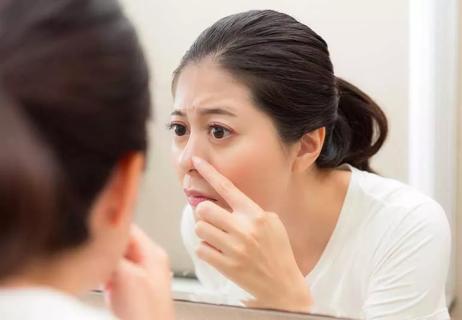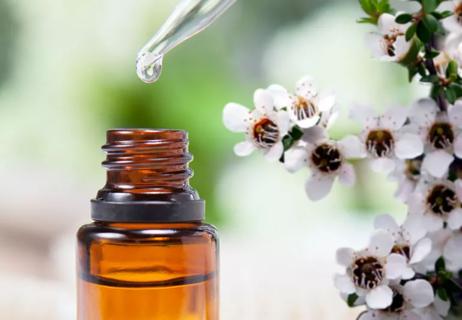A Q&A to prepare you for a smooth piercing experience

Ear piercing has gone from a trend to a tradition. And with so many parts of the ear available to pierce (think: tragus, helix, the always popular earlobe or all three), it could be just the style accent you need.
Advertisement
Cleveland Clinic is a non-profit academic medical center. Advertising on our site helps support our mission. We do not endorse non-Cleveland Clinic products or services. Policy
But before you (or your child) join the land of the pierced, get answers to some of the most common piercing questions from dermatologist Rachel Ward, MD.
A. If you go to a doctor’s office — whether it’s a pediatrician or dermatologist — they mark where you want the piercing and use an ear piercing gun. The piercing gun has a spring. When the trigger is released, the rapid spring motion pushes the earring through the ear.
Some tattoo and piercing shops use hollow-bore needles instead. Hollow-bore needles are the needles used when starting an IV. As they push through, they create a tiny hole in the earlobe or cartilage. They’re a little gentler than piercing guns because there is no spring action.
A. It depends on the part of the ear and person — everyone is different. You may see a little drop of blood, but there shouldn’t be much. If there is a lot of bleeding, you should seek medical help right away.
You may also bleed more if you take blood thinners or aspirin.
A. That also depends on you and your pain threshold. You may feel a pinch and some throbbing after, but it shouldn’t last long. The pain from either piercing method is probably equivalent.
The ear has nerves all through it. But the fatty tissue in the earlobe has less than other areas, so it may feel less painful.
Advertisement
A. Putting an ice cube or ice pack on your ear before the piercing can help. The cold numbs the area and confuses the brain about where the pain’s coming from.
I don’t recommend taking aspirin or ibuprofen beforehand because they tend to thin your blood and could cause more bleeding. But taking an extra-strength acetaminophen an hour before your procedure could help.
If you have a fear of needles or pain, we can certainly give you a numbing cream ahead of time. But in general, most people are fine with just ice.
A. Unless the child has some underlying condition, getting a baby’s ears pierced is fine. This is more of a cultural consideration than a medical one. Some cultures pierce their baby’s ears as early as a couple of months old.
If you do decide to get your baby’s ears pierced, the earrings should be flat studs that are close to the earlobe. Babies’ hands are all over the place. You want to make sure they can’t pull them out.
A. Good ear care is important. You’ve created an opening in your skin, so there’s a risk of infection. To prevent it, follow these three tips:
1. Regularly clean your pierced ears
Clean the area twice daily with mild soap and water. If you take a morning shower, clean it then and again right before bed. You can also use those little rubbing alcohol squares. Avoid using antibiotic ointments unless directed by a doctor — you can develop allergies to them if you use them too long.
2. Don’t take your earrings out too soon
Leave your earrings in for at least six weeks if they’re in your earlobe. Since cartilage doesn’t heal as quickly as earlobe tissue, keep cartilage piercings in longer — at least three to four months. After that, only take earrings out for short periods because the holes can still close fast.
3. Know which earrings to wear
When you do switch earrings, make sure they’re made from hypoallergenic materials so they won’t cause an allergic reaction. Fourteen-carat gold, medical-grade steel and titanium are the best. They should not contain alloys such as nickel (which you often find in costume jewelry) because you can develop a sensitivity.
A. It’s normal to have some redness, swelling or pain for a couple of days after getting your ears pierced. But your ears should look and feel better each day.
If you find that your ears do great and then suddenly start to become red, inflamed or crusty a week or two later, that’s usually a sign of infection.
If you think you have an infected ear piercing, it’s best to go to someone who can diagnose and treat you. That may not necessarily be the person who pierced you. Seek out your primary care provider, dermatologist or even an urgent care facility.
Advertisement
A. Your physician, pediatrician or dermatologist should know what they’re doing if they offer ear piercing services. But some jewelry and department stores, as well as tattoo or piercing shops, pierce ears, too. If you go to an ear piercing place outside of the medical field, make sure it’s:
A. Getting your ears pierced is a low-risk procedure. But speak to a medical professional before getting your ears pierced if you:
Advertisement
Advertisement
Learn more about our editorial process.
Advertisement

Soap, water and an antibiotic ointment are your best bet

It isn’t risk free and shouldn’t replace the aftercare recommended by your piercer

Understand the risks and take precautions against infection

A dermatologist explains why it happens and how to address it

Removing the piercing as early as possible is important for avoiding complications

Twice-a-day cleaning with a saltwater solution can help you resolve (and avoid) problems

Most recommended precautions center around minimizing bruising or swelling

Type 2 diabetes isn’t inevitable with these dietary changes

Applying a hot or cold compress can help with pain